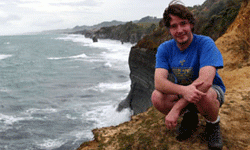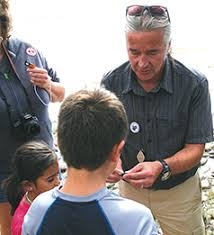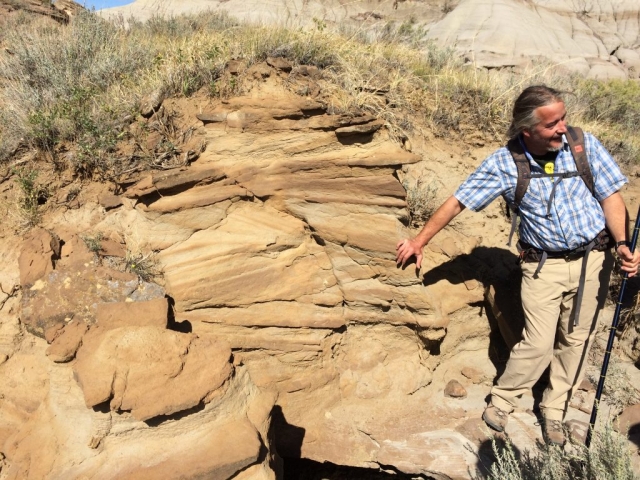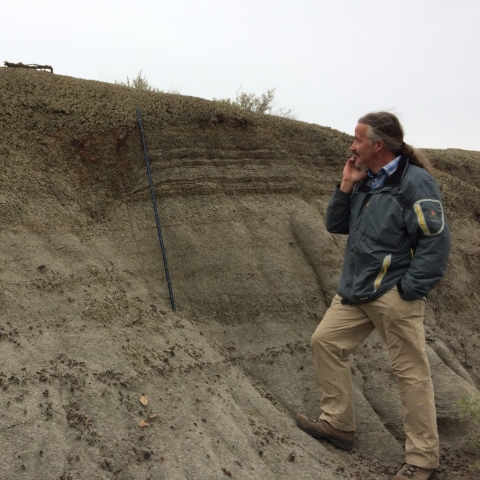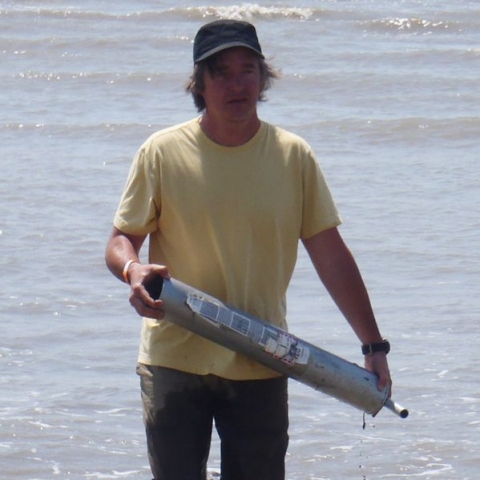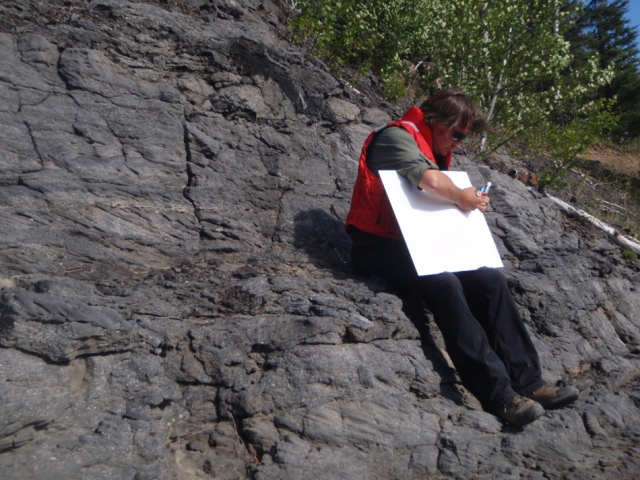


Research
Neoichnological Studies: Neoichnology is the study of modern animal-sediment relationships. Much of my research has been dedicated to establishing the distribution and behavior of burrowing animals in modern settings for application to the rock record. A good example of this work includes the distribution of burrowing animals in modern course-grained sediments. We have also investigated burrowing behavior and its correlation to the quality of food resources. Burrow geochemistry has also been investigated. And animal distributions in general have been established. All in all, this growing body of work represents a significant advancement in our understanding of neoichnology and this work is enjoying broad application to the rock record.
The Development of Process Ichnology: Process-based ichnology is the use of trace fossils to assess sedimentation rates, colonization times, and sedimentary parameters such as turbidity, hydraulic energy, and substrate cohesiveness. My research group and I have led in developing research methods for process-based ichnology. We have done this by using modern sedimentary environments and laboratory experiments to parameterize the response of animals to specific sedimentary conditions. We are the only research group using modern animals to develop a set of experimental procedures to systematically explore the potential for trace fossils to provide additional sedimentary knowledge.
The Application of Ichnofossils to Reservoir Characterization: Ichnofossils have often been used to determine the depositional setting of ancient strata. Their importance as permeable conduits in hydrocarbon reservoirs remains essentially unexplored. Primarily through the work of Pemberton and myself at the U of Alberta, the need to understand the impact trace fossils have on oil and gas production is becoming recognized. In this research partnership, I have been the main motivator in experimental methods and in conceptualizing application of experiments to reservoir settings. We have used reservoir data, laboratory experiments, and numerical modeling to assess the impact of bioturbation on resource quality (i.e. quantity and producibility of resource). The general classification of biogenic permeability was introduced in Pemberton and Gingras.
Geochemical Analyses of Trace Fossils: Our group has produced in two areas. (1) Geochemical characterization and interpretation of bioturbated sedimentary media. This has led to the recognition of new burrowing behaviors when I reported the activities of insect larvae mining for oxygen in oxygen impoverished settings. (2) Other work has provided important new data for numerical modelers to use. My group is now establishing expertise in cation sorption profiling of modern burrow walls. We have also characterized trace-fossil geochemical profiles to establish depositional through to paragenetic history: the results from these studies have been applied practically in reservoir analysis studies.
Amazonian seaway during the Miocene: This research involved generating a complete sedimentological, ichnological, and stratigraphic framework for Miocene deposits (primarily the Pevas Fm.) in the Amazon Basin in Peru and Brazil. Although these strata had been previously interpreted as having a lacustrine nature, our observations show that they are primarily marginal-marine sediments. Resolving the nature of this depositional system and determining its paleogeography (although still contested) will change the way we regard Tertiary sediment accumulation in the Amazon Basin.
